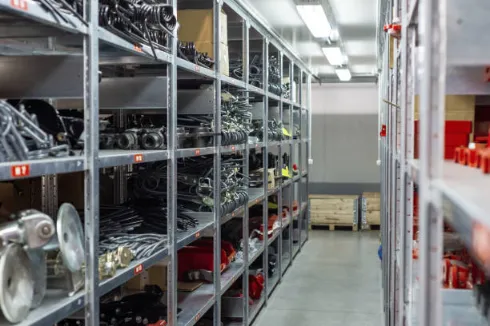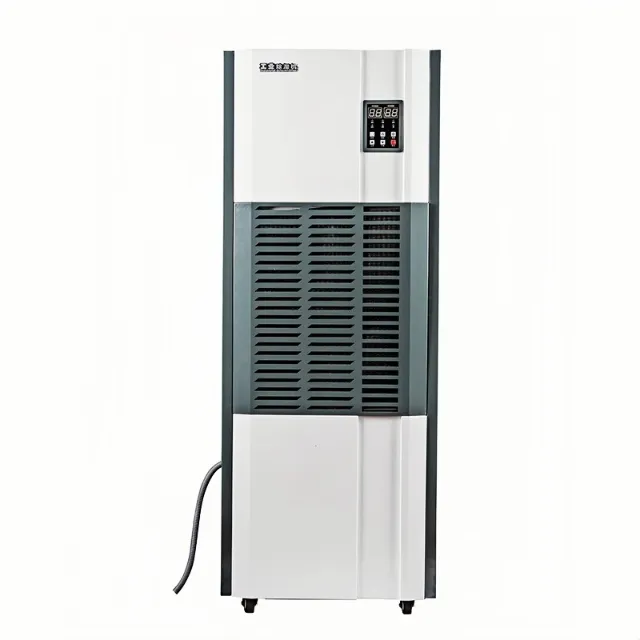How to Keep Metal Parts from Rusting with Dehumidifiers

Introduction
Rust sneaks up on metal parts in storage, slowly ruining them. It’s a headache that’s bugged industries for ages. Old school storage tricks, like tossing parts in plastic wrap or on plain shelves, don’t cut it because they skip the real problem: damp air. Moisture is what sparks corrosion, turning shiny metal into a flaky disaster. Companies like DAIHO Ventilation, pros in industrial climate control, get this and build systems to zap moisture and keep air moving just right.
Why Metal Rusts in Storage
How Rust Forms
Rust shows up when iron, oxygen, and water gang up. Humidity plays the bad guy, bringing the wet stuff that fuels oxidation. Even a quick puff of damp air can start trouble, especially in warm spots where reactions zoom. Common slip ups? Jamming parts too close, choking airflow, or stashing them near open windows where moist air creeps in. It’s not just puddles, tiny water bits floating in the air can kick things off.
The Cost of Ignoring Moisture
Letting humidity run wild hits the wallet hard. Rusty parts lose their precision, a total pain for machined bits where every fraction counts. Scrapping or fixing parts burns cash, not to mention downtime. Worse, corroded goods can tank a company’s good name. Customers don’t care about excuses, they want stuff that works. One bad shipment can cost contracts or leave a bad rep that sticks.

The Importance of Humidity Control
Optimal Humidity Levels for Metal Parts
Keeping humidity between 40% and 50% is the magic zone for stopping rust. Drop below 40%, and static can mess with some setups. Go above 50%, and corrosion risks shoot up fast. Temperature’s a factor too, warm air holds more water, so when it cools, you get condensation, especially in stuffy storage spots. Good airflow keeps things steady, dodging damp patches where rust loves to chill.
Signs of Excess Humidity
Spotting too much humidity isn’t always easy. Fogged up windows, a funky smell, or faint color changes on metal scream trouble. Slow growing rust spots, even on coated parts, wave a red flag. Grab a hygrometer for a quick check to see if levels are sneaking too high. Catching these hints early saves cash and stress later.
How Dehumidifiers Protect Stored Metal Parts
Moisture Removal at the Source
Dehumidifiers yank water vapor right out of the air, stopping rust in its tracks. Refrigeration units cool air to squeeze out moisture, then warm it back up for circulation. Desiccant dehumidifiers use special stuff to soak up moisture, perfect for chilly or already dry spots. Both do the job, but picking the right one depends on your space and weather. Either way, they keep air dry and metal happy.
Maintaining Stable Storage Conditions
Big warehouses need steady humidity control. Dehumidifiers can hum along all day, every day, keeping things even in huge spaces. Pair them with fans or HVAC setups to spread air smoothly, dodging wet spots. DAIHO Ventilation’s gear stands out here, its systems mix dehumidifiers, ventilation, and temp controls to create a rock solid setup for industrial storage.
Energy Efficiency and Maintenance
Today’s dehumidifiers don’t guzzle power. Many balance strong performance with low energy use, thanks to clever sensors and efficient parts. But upkeep is a must. Clean filters every couple of months and check drains to avoid clogs. Pro tip: keep units a bit away from walls for better airflow, so they don’t overwork themselves. Easy stuff, but it keeps things running smooth.
Practical Tips for Rust Free Storage
- Plan Air Circulation and Layout: Still air traps moisture like a sponge. Set up racks so air can flow between parts. Fans help push dry air around, especially in big spaces. Don’t shove parts into corners or against walls where damp air hangs out. A little thought keeps metal looking brand new.
- Monitor Humidity Regularly: Get some humidity sensors or data loggers, they’re worth it. These gadgets track changes as they happen, catching spikes before damage starts. Set alerts for when humidity hits 50% for extra safety. It’s like a rust alarm, no noise needed.
- Combine Dehumidifiers with Other Methods: Dehumidifiers rock, but they’re even better with teammates. Anti rust coatings or vapor corrosion inhibitors (VCIs) add extra armor. Temp control helps too, especially where seasons swing hard. DAIHO Ventilation’s systems shine here, weaving dehumidification, ventilation, and heating into a tight package that keeps metal safe all year. Side note: Ever smell a warehouse that’s like sweaty gym clothes? That’s usually a humidity issue, not just bad cleaning. Fix it, and the place feels fresher.
Common Mistakes to Avoid
Some storage habits cause more trouble than they’re worth. Banking on air conditioning alone is a classic goof, ACs cool but don’t always zap enough moisture. Getting a dehumidifier that’s too big wastes power, while one too small can’t keep up. Skipping upkeep is another trap. Dirty filters or gunked up drains let humidity sneak back in. A quick peek every few weeks dodges these issues. Oh, and don’t assume all metals act the same. Some alloys rust faster, so tweak humidity control to match what’s in storage. It’s not a one size fits all deal.
Conclusion
Taming humidity isn’t just nice, it’s the secret to rust free metal parts. Dehumidifiers are key for precise storage, nixing moisture before it turns into corrosion. With smart airflow and monitoring, industries can protect their gear and skip pricey fixes. DAIHO Ventilation’s climate control solutions make it simple, keeping rust at bay and equipment lasting longer. A dry, steady setup isn’t just smart, it’s worry free for any operation.
FAQ
Q1: How often should dehumidifiers be serviced?
Check filters every 2–3 months and clean or swap them as needed. Look at drainage systems every 6 months to stop clogs. A yearly pro checkup keeps units running great.
Q2: Can dehumidifiers work in cold environments?
Yup, but desiccant type dehumidifiers are better for cold spots. Refrigeration units struggle below 60°F, so pick based on your storage setup.
Q3: What’s the difference between a dehumidifier and an air conditioner?
ACs cool air and cut some moisture, but they’re not built for exact humidity control. Dehumidifiers focus on pulling out water, making them champs at rust prevention.
Q4: How do I know if my storage area needs a dehumidifier?
If humidity often tops 50%, or you see foggy windows, musty smells, or early rust, you need one. A hygrometer gives you the real scoop.
Q5: Are there metals that don’t need humidity control?
Stainless steel and some alloys fight corrosion better, but none are totally safe in damp conditions. Steady control is always the best bet.
